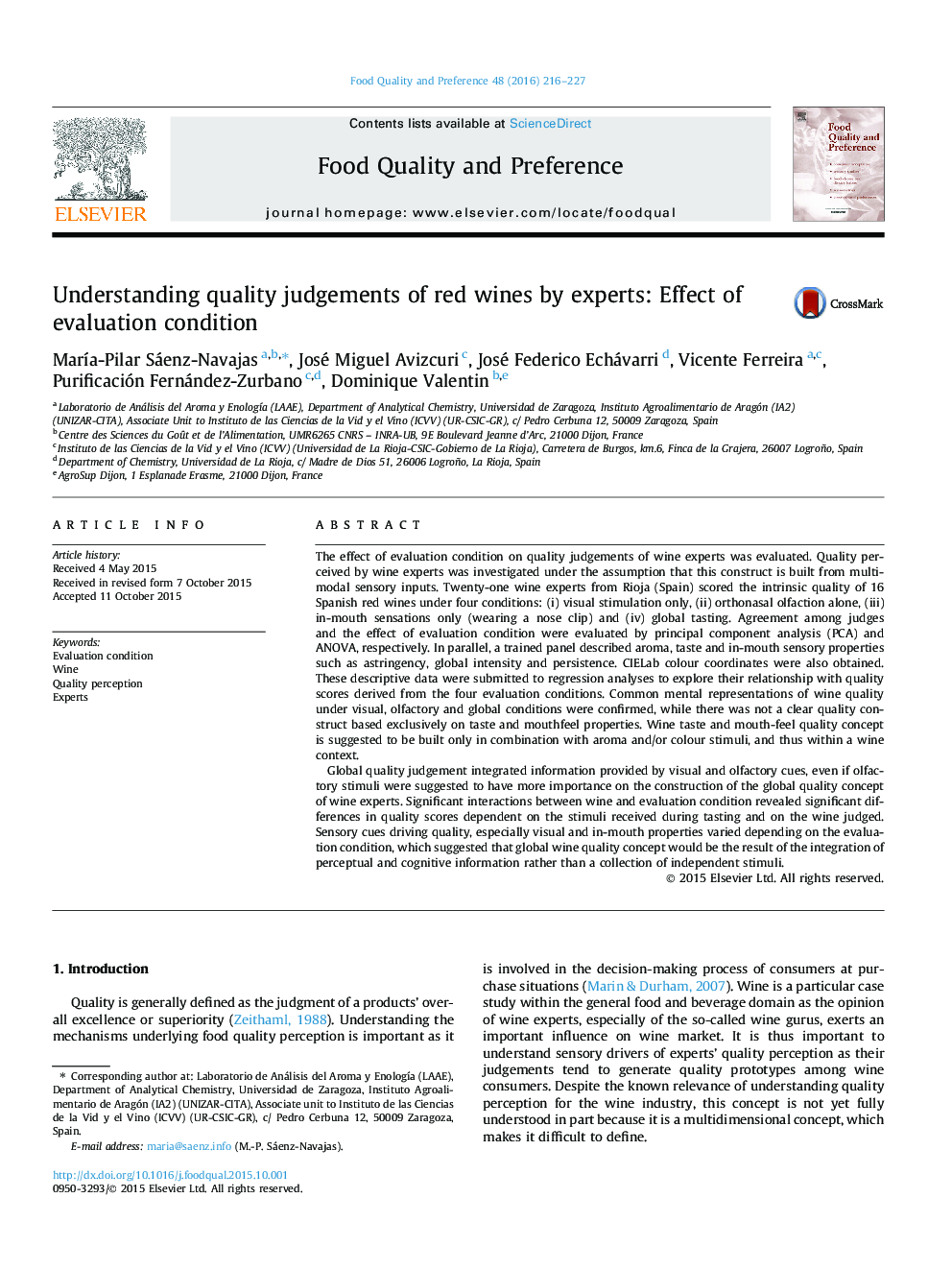| Article ID | Journal | Published Year | Pages | File Type |
|---|---|---|---|---|
| 6261212 | Food Quality and Preference | 2016 | 12 Pages |
â¢The evaluation condition effect of quality judgements of wine experts was evaluated.â¢Agreed mental representation for visual, olfactory and global quality were observed.â¢No clear quality construct based exclusively on in-mouth properties was confirmed.â¢Global quality judgement integrated information provided by visual and olfactory cues.â¢Olfactory stimuli were especially important in the global quality concept.
The effect of evaluation condition on quality judgements of wine experts was evaluated. Quality perceived by wine experts was investigated under the assumption that this construct is built from multimodal sensory inputs. Twenty-one wine experts from Rioja (Spain) scored the intrinsic quality of 16 Spanish red wines under four conditions: (i) visual stimulation only, (ii) orthonasal olfaction alone, (iii) in-mouth sensations only (wearing a nose clip) and (iv) global tasting. Agreement among judges and the effect of evaluation condition were evaluated by principal component analysis (PCA) and ANOVA, respectively. In parallel, a trained panel described aroma, taste and in-mouth sensory properties such as astringency, global intensity and persistence. CIELab colour coordinates were also obtained. These descriptive data were submitted to regression analyses to explore their relationship with quality scores derived from the four evaluation conditions. Common mental representations of wine quality under visual, olfactory and global conditions were confirmed, while there was not a clear quality construct based exclusively on taste and mouthfeel properties. Wine taste and mouth-feel quality concept is suggested to be built only in combination with aroma and/or colour stimuli, and thus within a wine context.Global quality judgement integrated information provided by visual and olfactory cues, even if olfactory stimuli were suggested to have more importance on the construction of the global quality concept of wine experts. Significant interactions between wine and evaluation condition revealed significant differences in quality scores dependent on the stimuli received during tasting and on the wine judged. Sensory cues driving quality, especially visual and in-mouth properties varied depending on the evaluation condition, which suggested that global wine quality concept would be the result of the integration of perceptual and cognitive information rather than a collection of independent stimuli.
